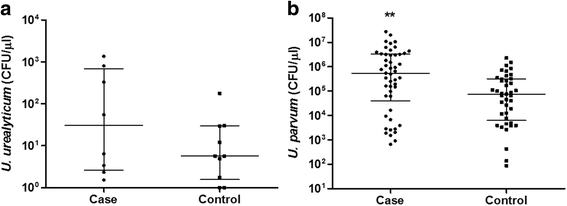Co-infection of sexually transmitted pathogens and Human Papillomavirus in cervical samples of women of Brazil
- PMID: 29246195
- PMCID: PMC5732421
- DOI: 10.1186/s12879-017-2835-5
Co-infection of sexually transmitted pathogens and Human Papillomavirus in cervical samples of women of Brazil
Abstract
Background: Some sexually transmitted infectious agents, such as Chlamydia trachomatis and Herpes simplex, cause local inflammation, and could contribute to Human Papillomavirus (HPV) and cervical lesion progression. Thus, the aim of this study was to determine any association between the presence of microorganisms of gynecological importance, sexual behavior, clinical and demographical variables to the development and progress of cervical lesions.
Methods: One hundred and thirty-two women between 14 and 78 years and living at Vitória da Conquista, Bahia, Brazil, were included (62 individuals with cervical lesions and 70 without lesions). They answered a questionnaire to provide data for a socioeconomic and sexual activity profile. Samples of cervical swabs were collected and analyzed by PCR to detect genital microorganisms and HPV. Quantitative PCR was used to detect and quantify Ureaplasma urealyticum and Ureaplasma parvum. Univariate and multiple logistic regression were performed to measure the association with the cervical lesions, and an odds ratio (OR) with 95% confidence intervals (95%CI) were calculated. The Mann-Whitney U test was also used to compare the microorganism load in the case and control groups. The significance level was 5% in all hypotheses tested.
Results: Cervical lesions were associated with: women in a stable sexual relationship (OR = 14.21, 95%CI = 3.67-55.018), positive PCR for HPV (OR = 16.81, 95%CI = 4.19-67.42), Trichomonas vaginalis (OR = 8.566, 95%CI = 2.04-35.94) and Gardnerella vaginalis (OR = 6.13, 95%CI = 1.53-24.61), adjusted by age and qPCR for U. parvum. U. parvum load showed a statistical difference between the case and control groups (p-value = 0.002).
Conclusion: Variables such as stable relationship, HPV, T. vaginalis, G. vaginalis were associated with cervical lesions in epidemiological studies. U. parvum load was higher in woman with cervical lesions compared with women without lesions. Additional studies are needed to better understand the role of these factors in cervical lesion development.
Keywords: Cervical cancer; HPV; Sexually transmitted infections; U. Parvum.
Conflict of interest statement
Ethics approval and consent to participate
This study was previously approved by the Ethics Committee on Human Research of the Institute of Biomedical Science – University of São Paulo, Brazil, (protocol number 1089). The purpose of the study was explained in detail and written, informed consent was obtained from all participants. Confidentiality was maintained by avoiding the use of names and other identifiers.
Consent for publication
Not applicable.
Competing interests
All authors declare that they have no competing interests.
Publisher’s Note
Springer Nature remains neutral with regard to jurisdictional claims in published maps and institutional affiliations.
Figures

References
-
- GLOBOCAN 2012 Estimated Cancer Incidence, Mortality and Prevalence Worldwide [http://globocan.iarc.fr/Default.aspx]
-
- INCA . Estimativa 2014: Incidência de Câncer no Brasil. Rio de Janeiro: INCA; 2014.
-
- IARC Working Group on the Evaluation of Carcinogenic Risk to Humans. Biological Agents. Lyon (FR): International Agency for Research on Cancer; 2012. (IARC Monographs on the Evaluation of Carcinogenic Risks to Humans, No. 100B.) Available from: https://www.ncbi.nlm.nih.gov/books/NBK304348/.
MeSH terms
Substances
Grants and funding
LinkOut - more resources
Full Text Sources
Other Literature Sources
Medical

